January 2018: Between Media Art and Cultural Heritage
The New Year marks the beginning of our search for the best media artworks in the world today: From January to March, projects can be submitted to the Prix Ars Electronica , in which the winners are not only rewarded with the Golden Nica – they also receive prize money of up to 10,000 euros and the chance to showcase their work to a broad international audience at the Ars Electronica Festival. Read an interview with Gerfried Stocker, artistic director of Ars Electronica..
“At the Prix Ars Electronica, of course, excellence will be rewarded and the Media Art Award will go to the best works of the respective year. But it’s also very important to see it as a trend barometer and to use it as an instrument – for us as well as for the artists and the public – to show how dynamically this scene evolves from year to year.
Gerfried Stocker, artistic director of Ars Electronica
On behalf of the European Commission, Ars Electronica, together with Bozar and Waag, is awarding a further prize almost simultaneously with the Prix Ars Electronica – the STARTS Prize of the STARTS Initiative, which is endowed with two grants of 20,000 euros. Here, too, projects can be submitted from January to March that are closely interwoven with the fields of science, technology and art. For both prizes, an international jury decides who will win the race.

Credit: Ars Electronica / Martin Hieslmair
Those who would like to broaden their horizons in the meantime are in good hands at the Ars Electronica Center. With a few exceptions, the Museum of the Future is open all year round. A new addition is the VRLab. Here, current virtual reality worlds can be explored and tried out personally with the help of infotrainers.
Although it will be some time before VR technology can establish itself on a broad market, the Europe-wide Immersify research project, in which the Ars Electronica Futurelab is involved, is doing everything it can to push this forward.
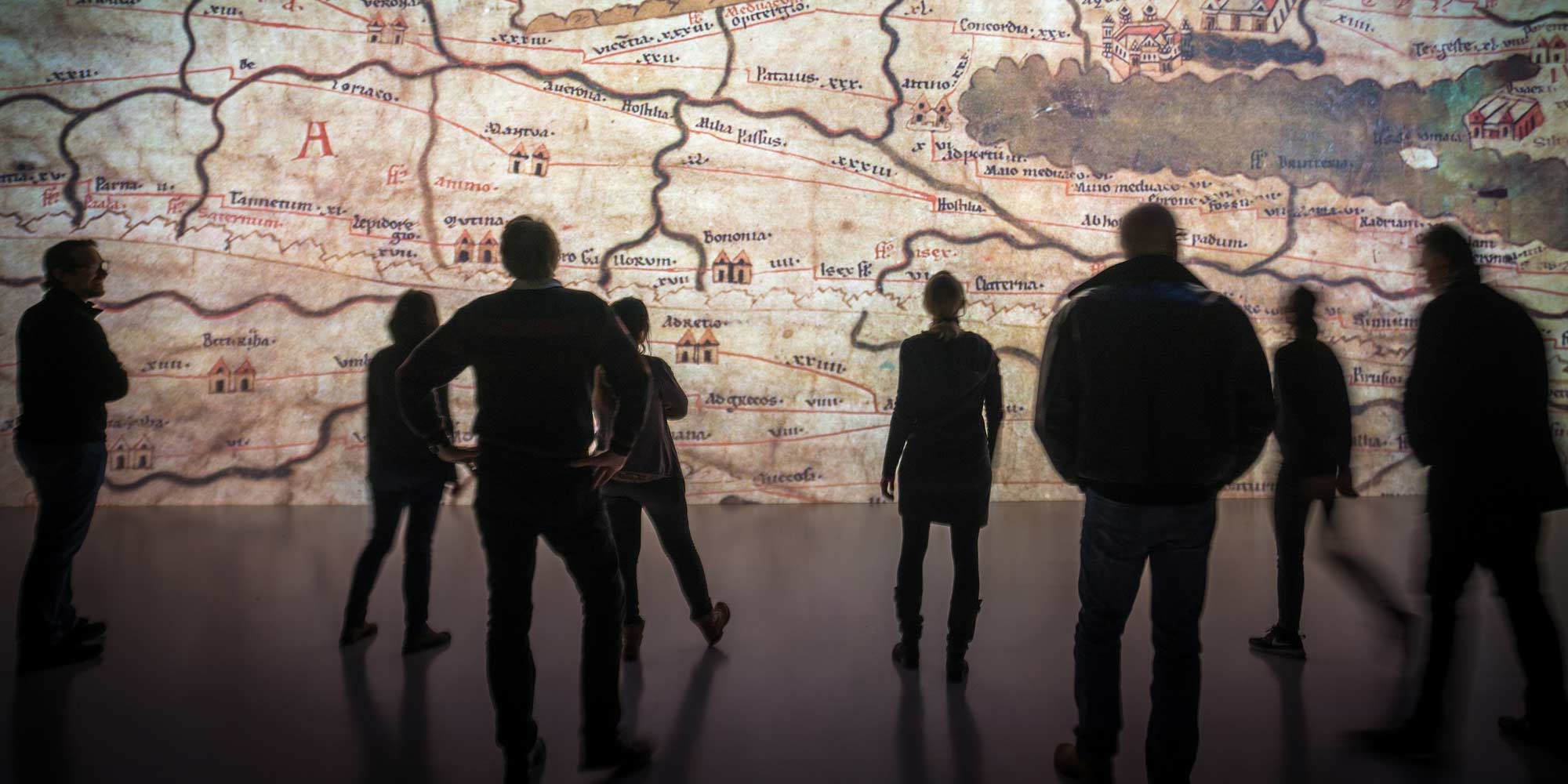
Credit: Ars Electronica / Robert Bauernhansl
But virtual reality already plays an important role when it comes to documenting and making art and cultural treasures from earlier epochs accessible. As part of the European Year of Cultural Heritage, the Ars Electronica Center will be addressing the topic throughout the year and inviting visitors to detailed presentations at Deep Space 8K.
“The screen alone wouldn’t have told the story so charmingly, nor would the house alone. In the combination it’s just a nice story.”
Sandra Reichl, artist
Meanwhile, for Ars Electronica Solutions in Vienna, everything revolves around communicating traditional coffee house culture. The creative company implemented three projects for Café Sacher Eck that took advantage of the analog and digital worlds.
February 2018: Linz – Tokyo – Mars, and back again
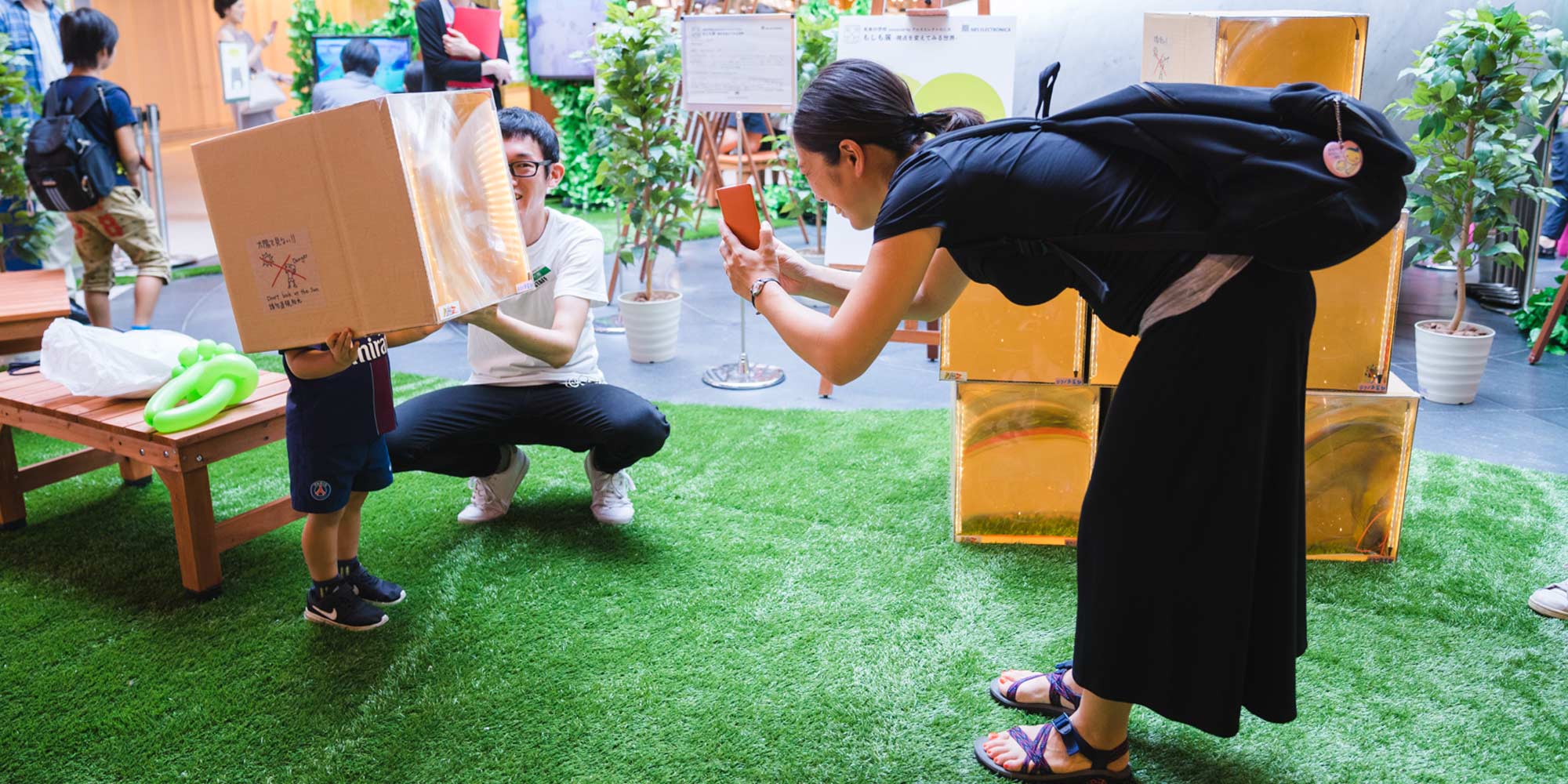
Credit: Tokyo Midtown
Ars Electronica not only deals with the interface between art, technology and society in Linz. A stable outpost has been established in Japan, where we are guests in a wide variety of formats. For example, with the “School of the Future” – behind the name there are alternating exhibitions and discussion groups in the urban complex of Tokyo Midtown in Japan, which the Ars Electronica Futurelab regularly develops.

Credit: Ars Electronica / Robert Bauernhansl
Together with the European Space Agency (ESA) and other scientific institutions such as the Austrian Space Forum (ÖWF), we are constantly pointing our antennae in the direction of space. Lectures such as “Deep Space LIVE” are dedicated to the international Mars simulation in Oman.

Credit: Ars Electronica / Robert Bauernhansl
The European Space Education Ressource Office (ESERO), which has been located at the Ars Electronica Center for two years now, is focusing on bringing the topic of space closer to the younger generation. Annually recurring events such as the Museum Total event focus on astronomy – a topic that many visitors to the Ars Electronica Center are interested in.
For those who haven’t been inspired enough by the numerous space voyages that take place here at the Ars Electronica Center every day, perhaps “Get Inspired” is the event to be. The evening event invites successful local businesses to come together, present their success stories and visions in short lectures.

Credit: Ars Electronica / Robert Bauernhansl
Networked thinking is also an important component in achieving climate and energy goals. The Ars Electronica Futurelab is involved in the development of E_PROFIL – a toolkit for energy- and resource-efficient urban development.
March 2018: Controlled Swarms, Visualized Concerts
The Ars Electronica Futurelab is converting the know-how gained at previous SPAXELS shows into the Swarm3D software. The specially developed program calculates the optimal flight paths of drones in swarm movements and can be used as a plug-in for Autodesk 3DS MAX.

“Flow” / Poyraz Yildirim, Credit: Ars Electronica / Vanessa Graf
This time the TIME OUT .08 has to do with swarms of pixels. In cooperation with the Linz University of the Arts, this time, the exhibition series is devoted exclusively to the visualizations of their students for Deep Space 8K at the Ars Electronica Center.
Under the direction of Gerhard Funk, the students familiarized themselves with laser tracking in the Deep Space 8K course, which, thanks to the development work of the Ars Electronica Futurelab, can locate people in the room and embed their position into the visualization.

Credit: Julian Schmiederer
A few days later in Abu Dhabi, the outstanding pianists Maki Namekawa and Dennis Russell Davies will be accompanied by the real-time visualizations of the artist Cori O’Lan at Pianograhique in collaboration with Ars Electronica.

Credit: Ars Electronica / Robert Bauernhansl
Meanwhile, “visualization artists” from other times will be the focus of another “Deep Space LIVE” at the Ars Electronica Center. Egon Schiele’s “Trude Engel” will be examined in detail here.
April 2018: The month of decisions
Who will receive the Golden Nica of the Prix Ars Electronica, who will receive this year’s STARTS Prize, and what is the theme of this year’s Ars Electronica Festival? April is the month of decisions.
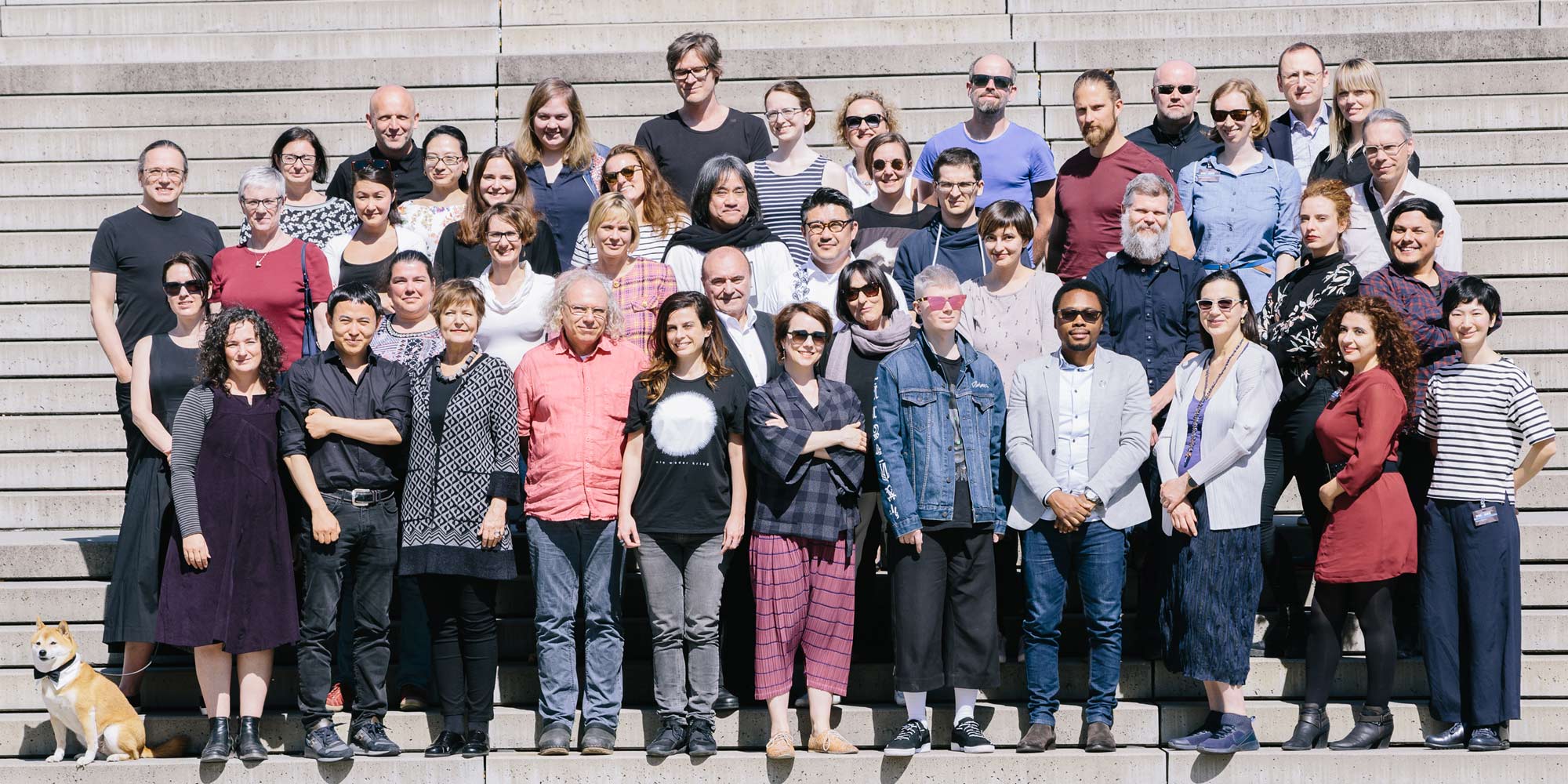
The 2018 jury, Credit: vog.photo
The international jury, which has travelled to Linz specifically to make the decision, has a few days to select the best media artworks of the year. This year, the Prix Ars Electronica will receive a total of 3,046 entries from 85 countries.
“There’s no excuses, there’s no casual online voting. In each of the categories, we select five internationally appointed experts who will take a retreat for these three days and from early in the morning until late at night will only discuss and sometimes argue about what is currently exciting and important in their category and what core criteria are associated with it.”
Gerfried Stocker, Artistic Director of Ars Electronica
The STARTS Prize jury will also meet in Linz in April to select the two winners of the European Commission Prize. The trophies of both prizes will then be ceremoniously presented at the Ars Electronica Gala in September.
“Artists can open up a new field or a new perception of how technology can be used, something industry itself or even governments may not have thought about.”
Francesca Bria, juror at the 2018 STARTS Prize
In April there is another, somewhat different competition. Several pupils have teamed up to develop small satellites with measuring instruments out of beverage cans and to catapult a rocket from an airfield into the sky at the CanSat competition.

Credit: Ars Electronica / Vanessa Graf
Back at the Ars Electronica Center, the OTELO Futurespace transforms the foyer for children and teens into a colorful playground full of laser cutters, robots, drones and other digitization technologies.
“They know what robots can do now, what artificial intelligence is, how dangerous it could be. In order to use these technologies in a positive way, we need kids who know for themselves where they can and can’t plug in, kids who also know what they need to be able to shape the world.”
Martin Hollinetz, Otelo eGen
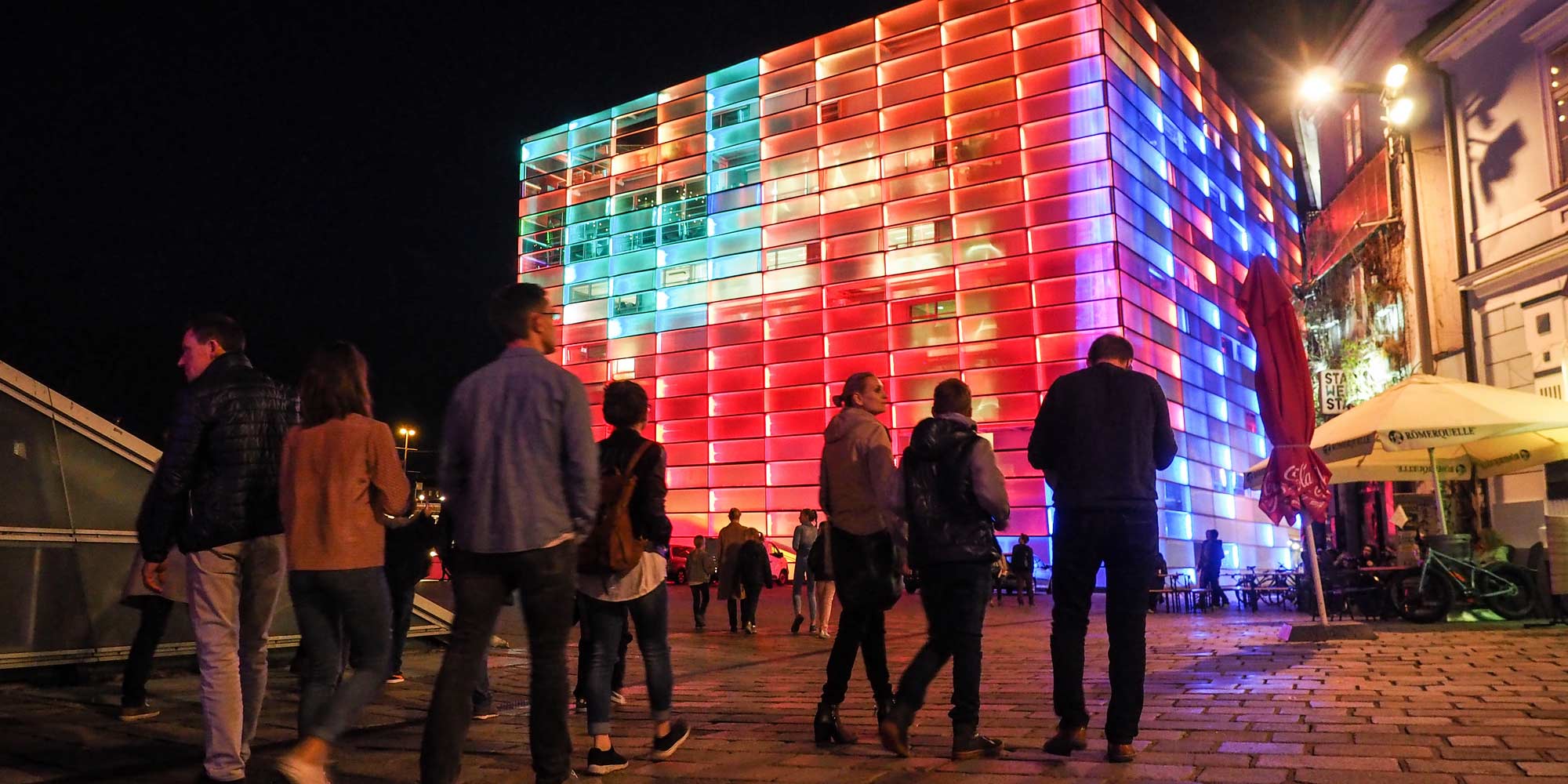
Credit: Ars Electronica / Martin Hieslmair
During the Long Night of Research, the Ars Electronica Center will open late into the night with extraordinary presentations such as a live broadcast of a surgery at Deep Space 8K and special guided tours through the research area of the Ars Electronica Futurelab.
What else the Deep Space 8K at the Ars Electronica Center has to offer, apart from its daily routine program, can be seen in an article on our Ars Electronica Blog: From the shooting of a music video to dance performances and interactive installations, there’s something going on here all year round.
It is the shared experience of digital worlds that makes Deep Space 8K so exciting – a field of research that the Playful Interactive Environments group at Hagenberg University of Applied Sciences is also investigating in the field of virtual reality and gaming.

Sun / Michael König. Credit: Ars Electronica / Robert Bauernhansl
While in Vienna the Umdasch Group is presenting itself in the newly opened World Museum in the form of an exhibition realized by Ars Electronica Solutions for the company on the occasion of its 150th anniversary, …
… we reveal the secret behind this year’s festival theme at a press conference: “ERROR – the Art of Imperfection,” that’s the theme that the Ars Electronica Festival will be focusing around in September 2018.
Gerfried Stocker, the artistic director of Ars Electronica, and Michael Doser, anti-matter researcher at CERN, talk in an interview with the Ars Electronica Blog about errors and how we deal with them.
“Standstill is always the worst thing that can happen to us.”
Gerfried Stocker, Artistic Director of Ars Electronica
“The fear of making an error is not a good counselor when it comes to discovering new territory.
Michael Doser, antimatter researcher at CERN
May 2018: Being creative together
When creative people from different fields come together, very exciting projects emerge. One example is the Creative Robotics exhibition at the Ars Electronica Center, where industrial robots demonstrate that they are not only suitable for use in huge production halls.

Credit: Ars Electronica / Martin Hieslmair
New technologies such as 3D printers, laser cutters and DIY book scanners are waiting in the FabLab of the Ars Electronica Center to be tried out.
To ensure that even more people will have access to these technologies in the future, entrepreneur Oskar Ekponimo, supported by the Austrian Foreign Ministry and Ars Electronica, has set up the “Gallery of Code“, a multidisciplinary laboratory in Nigeria.
The Japanese advertising agency Hakuhodo and Ars Electronica invite creatives to the Future Innovators Summit – an interdisciplinary think tank in the heart of Japan’s megacity. During joint brainstorming sessions, the interdisciplinary teams explore the issues of living together in a big city.
All year long, the bees on the roof of the Ars Electronica Center show us how tasks can best be mastered together. We use a webcam to follow their busy activities, and anyone who wants can purchase the resulting city honey right here.
From a perspective similar to that of bees, drones are commissioned by voestalpine to look at the world’s most modern stainless-steel plant in Kapfenberg. Thanks to Mixed Reality, one can already see what the plant will look like after completion of the construction site.
“You take on some technology, then you see something sharp again with these glasses, and when you don’t feel like seeing sharp anymore, you put them aside again.”
Alois Ferscha, JKU Linz
What if everything that surrounds us and we have created becomes intelligent and it is no longer possible for us humans to comprehend the actions in the “Internet of Things”? In a lecture, Alois Ferscha, Professor at the Johannes Kepler University Linz, dealt with the world of networked, thinking things.
June 2018: More details on the Ars Electronica Festival are leaking through
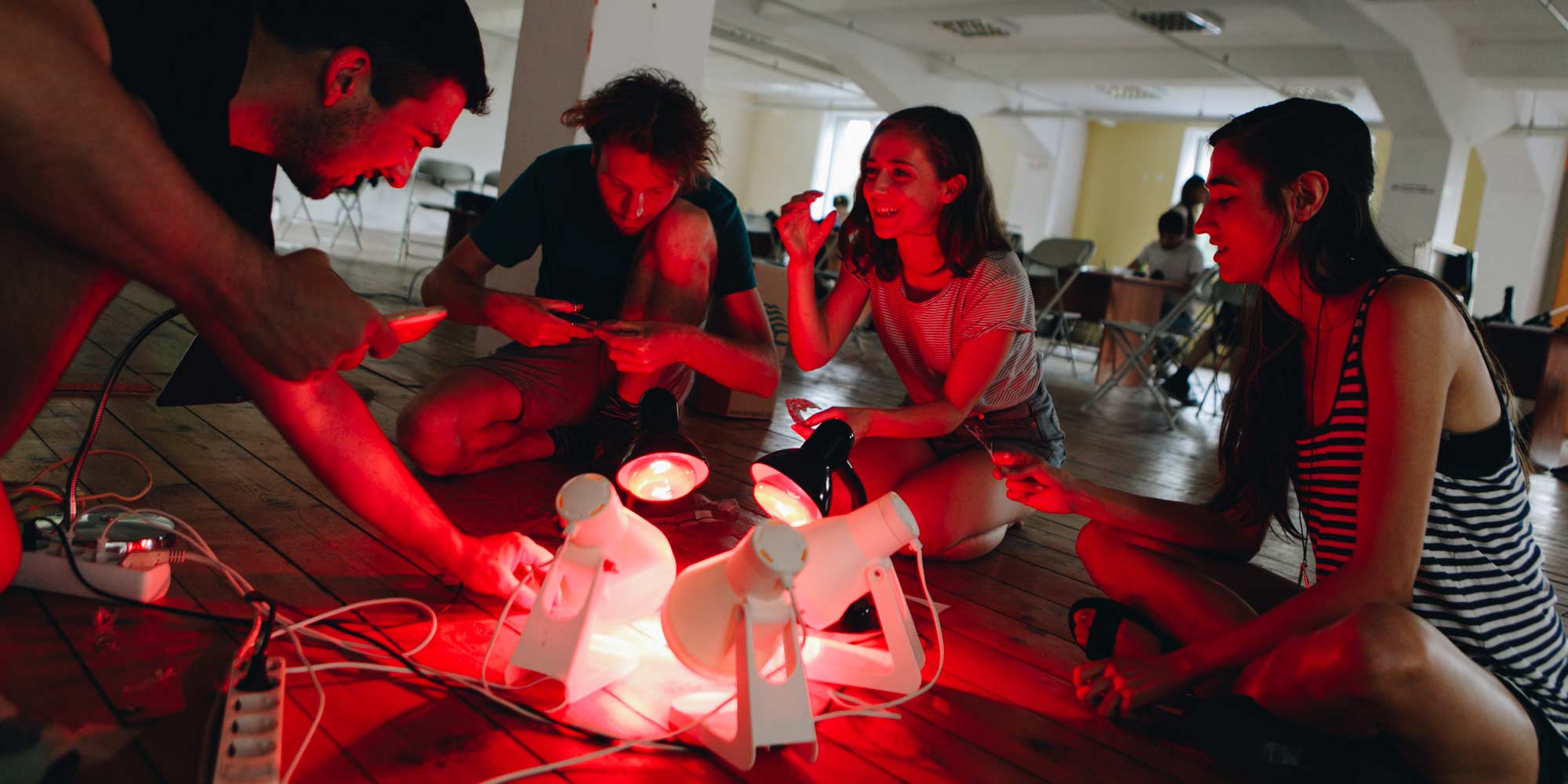
Credit: Lina Krivoshieva
u19 – CREATE YOUR WORLD accompanies the next generation on their way to using technology as a creative tool. In this role, workshops for children and young people will also take place outside Austria. For example in Plovdiv, the European Capital of Culture 2019 in Bulgaria.
Moving boxes pile up in front of the Ars Electronica office. The festival team moves into POSTCITY to prepare everything for the festival in September. Thanks to Austrian Post, we are once again able to use the empty building of the former postal distribution center directly next to Linz’s main train station as a stage for one of the world’s largest media art festivals.
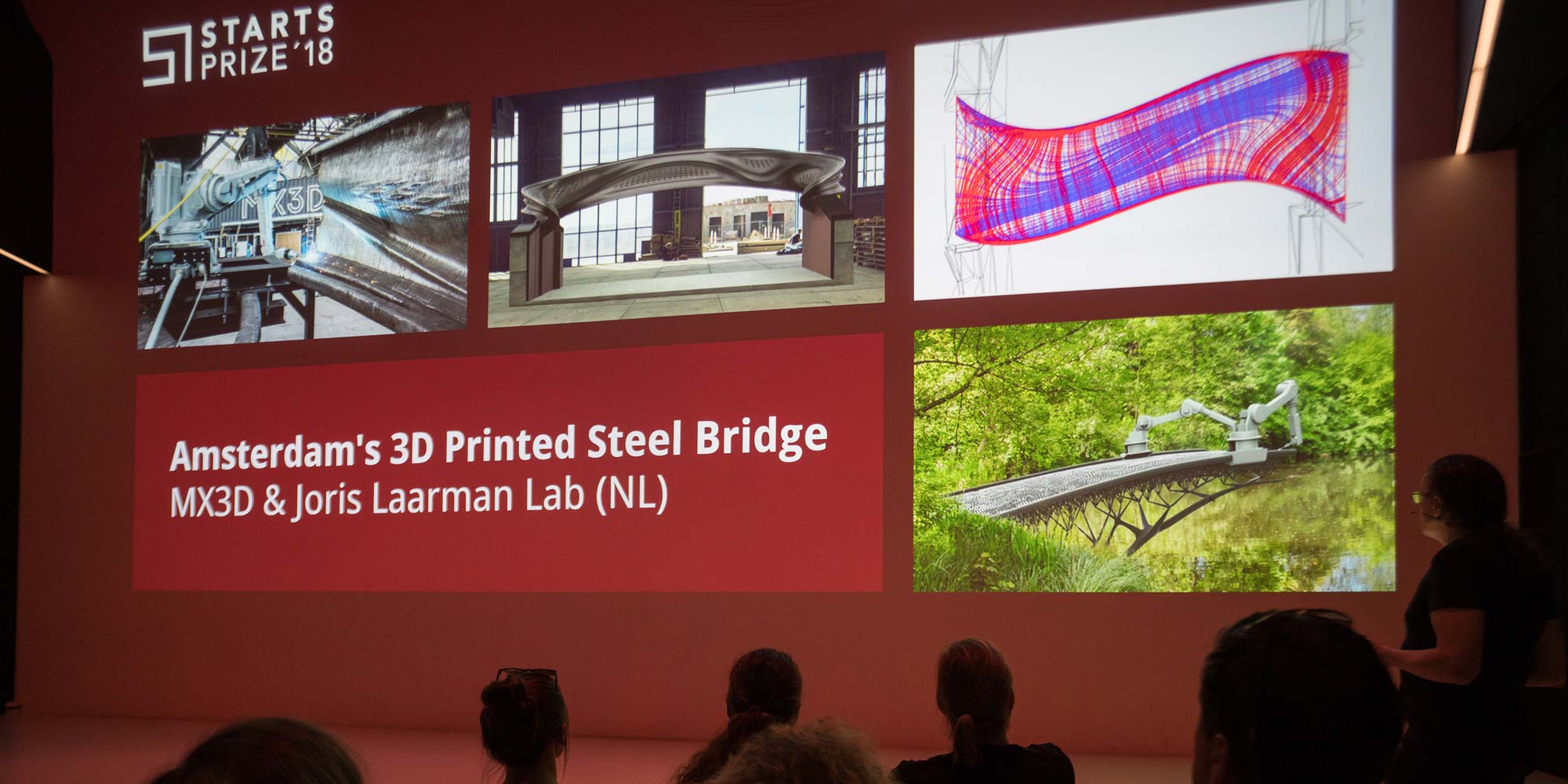
Credit: Ars Electronica / Robert Bauernhansl
Even more details leaked as the winners of the Prix Ars Electronica were announced and the contents of the CyberArts exhibition in September is determined: There will be one Golden Nica each for Bellingcat by Eliot Higgins, an online platform against fake news, for BitSoil by the LarbitsSisters, a campaign against the unfair distribution of money around the world, for Tropics by Mathilde Lavenne, a computer animation that illuminates the history of a Mexican farm, for the network Leonardo around Roger Malina, and for the computer game Levers and Buttons by Lorenz Gonsa, Martin Hatler, Samuel Stallybrass and Vincent Thierry.
The winners of the European Commission’s STARTS Prize 2018 will also be published in June: the team around Amsterdam’s 3D-printed steel bridge and bio-hacker Giulia Tomasello will each receive 20,000 euros for Future Flora.
It is also certain at this point that the fire-fighting equipment supplier Rosenbauer will be moving out for the Ars Electronica Festival with its Concept Fire Truck. At the same time, the collaboration with the Ars Electronica Futurelab in the field of warm control of autonomous vehicles will also begin.
July 2018: Guests at the Ars Electronica Center

Summer is at its best – and our visitors to the Ars Electronica Center show us all year round how they experience a visit to the Museum of the Future – post your photo on Instagram with the hashtag #arselectronica!
August 2018: An intense time
The overall picture of the Ars Electronica Festival in September is getting sharper every day, getting more and more contours from hour to hour and becoming more and more tangible from minute to minute. It’s an intensive work schedule for all areas of Ars Electronica.
If you look closely, you also see structural changes to the POSTCITY. At the top of the roof, the festival team is building a sun deck – a highlight of the upcoming Himatsubushi exhibition.

The One that Shatters in the Air / Changyeob (C.Y.) Ok (KR), Credit: vog.photo
Only through the active support of our partners is it possible to create a festival in this dimension. We would also like to thank all the institutions and universities that work with us. Alone 24 universities put together an exciting campus exhibition, from Hexagram from Canada to Interface Cultures from Linz. But also individual artists such as Featured Artist Elisabeth Schimana or the artist duo Robertina Sebanjic and Gjino Sutić with their EMAP/EMARE residency project “aqua_forensic” will find time to present their work in person.
But the world of Ars Electronica also continues to turn beyond the festival continent in the summer. For example, we are changing our web address from aec.at to ars.electronica.art, since Ars Electronica is becoming increasingly valuable internationally and we are putting the importance of art in the foreground.
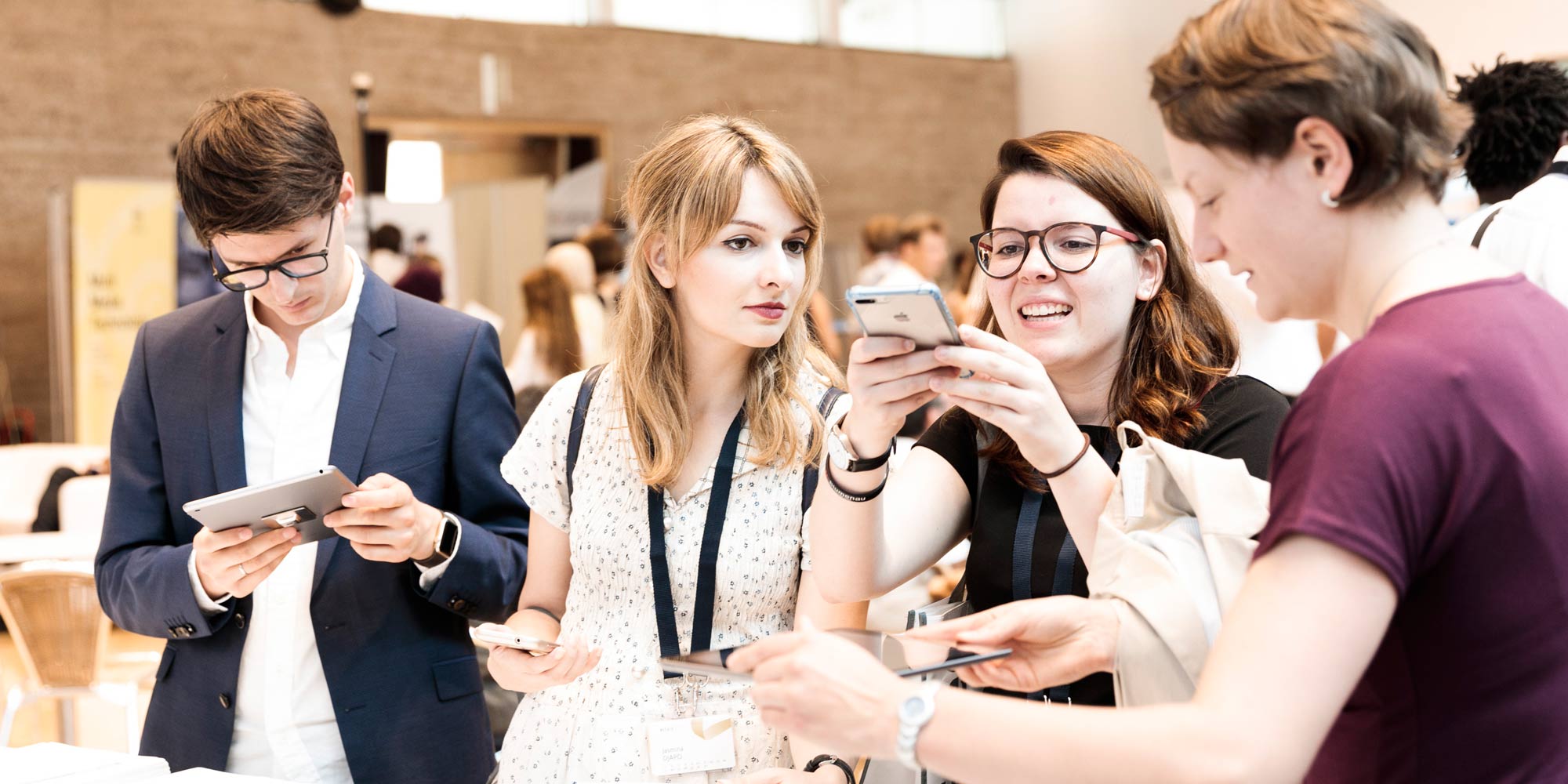
Credit: vog.photo
We are also represented at the European Forum Alpbach with a small exhibition of several media artists.
September 2018: The Festival
From September 6 to 10, 2018, the Ars Electronica Festival takes place under the theme “ERROR – The Art of Imperfection” at several locations in the city of Linz, first and foremost in POSTCITY, the former mail distribution center near the main train station. We have compiled our own feature for this purpose.

Credit: vog.photo
With more than 105,000 visits, the Ars Electronica Festival has set a new record. 614 events on five days. 1,357 artists, scientists, technologists, entrepreneurs and activists from 54 countries, 396 cooperation partners from all over the world and 402 accredited media representatives and bloggers from 40 countries. The figures speak for themselves.

ArchaeaBot / Anna Dumitriu, Alex May, Credit: Ars Electronica / Vanessa Graf
From the thematic exhibitions in POSTCITY, from the roof down to the bunker, from exhibitions such as “The Practice of Art and Science” or the CyberArts to the Gallery Spaces – there was plenty to experience on these five days.
But that wasn’t all. The conductor Markus Poschner of the Bruckner Orchestra is faced with an industrial robot from KUKA, which SILK Fluegge includes in their dance performance.
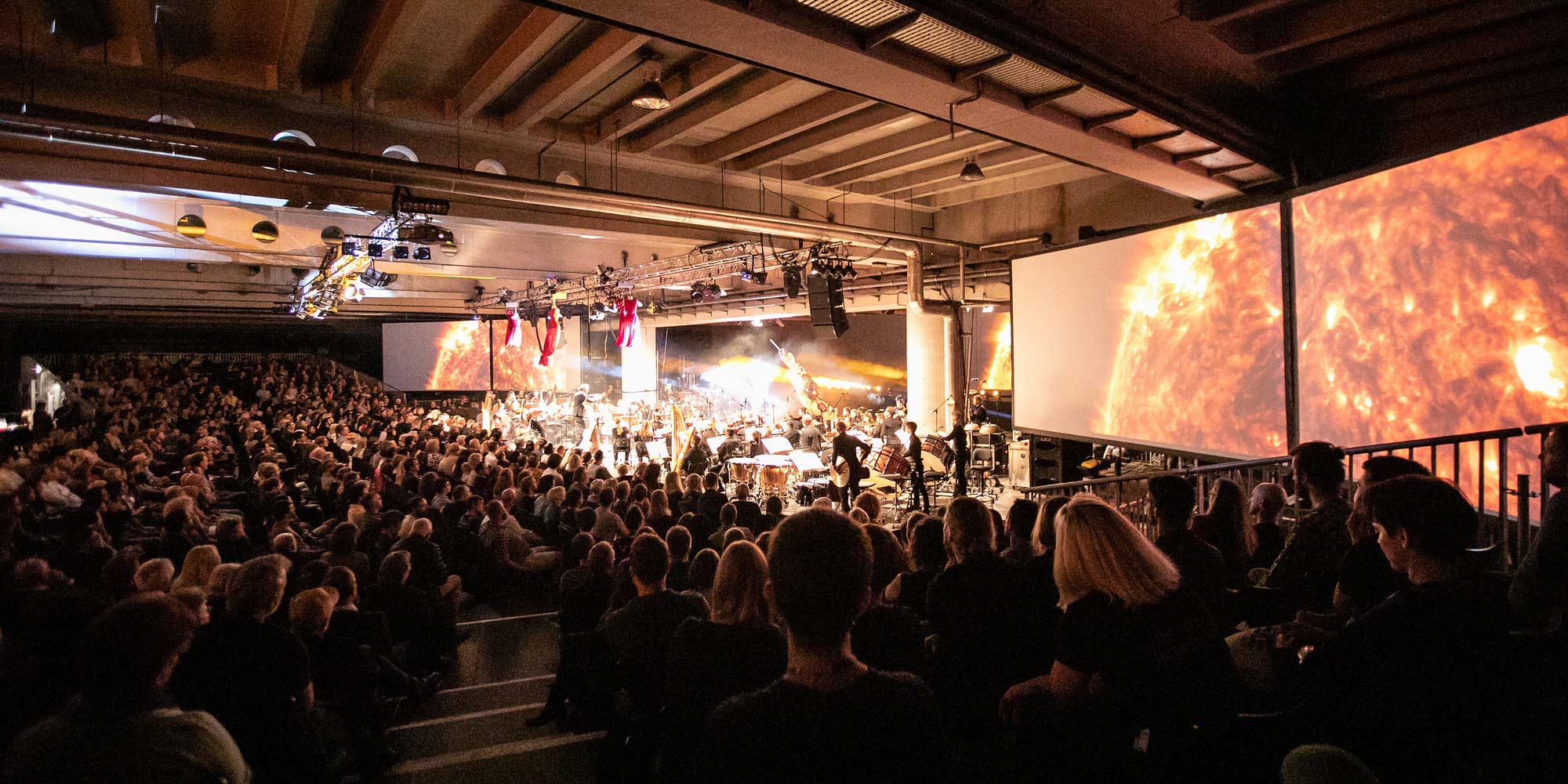
Credit: vog.photo
The POSTCITY was a place for conferences, for joint brainstorming at the Future Innovators Summit, for a hackathon or for the fire brigade competition “Emergency Error Battle“.
“It was a pleasure to be at @ArsElectronica 2018 and an honour to see my blog hosted on their website.”
Roberto Viola, Director General of DG CONNECT (Directorate General of Communication, Networks, Content and Technology) of the European Commission
After his visit to the Ars Electronica Festival, Roberto Viola, Director General of DG CONNECT (Directorate General of Communication, Networks, Content and Technology) of the European Commission, reiterated the importance of involving art in the evolution of Artificial Intelligence technology.
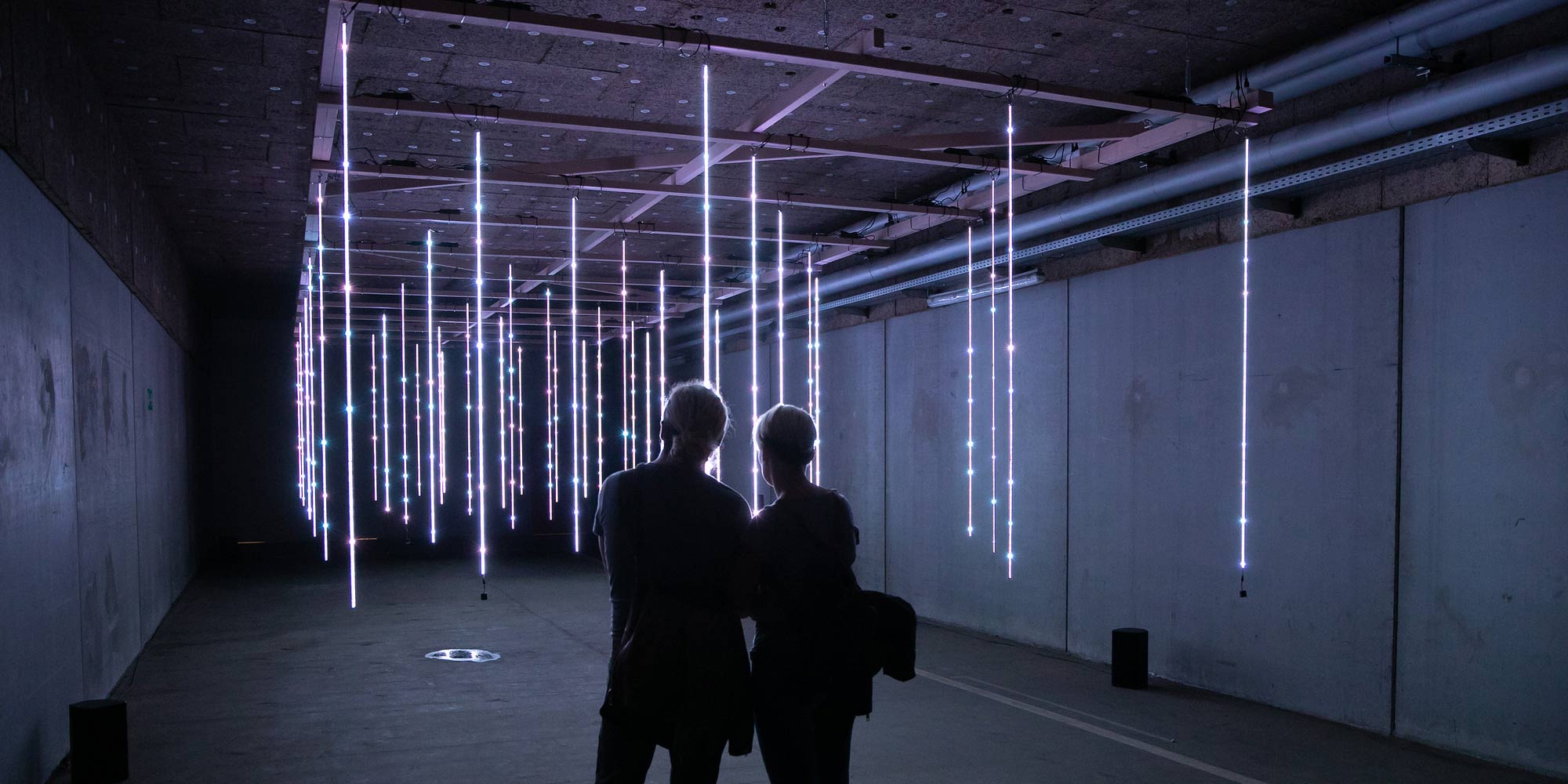
in the rain / Yuki Anai, Hideaki Takahashi, Credit: vog.photo
The winners of the 2018 Prix Ars Electronica and the 2018 STARTS Prize are honored at the Ars Electronica Gala.

Credit: vog.photo
After intensive five days, the Ars Electronica Festival has also come to an end – a quick stroll through the building filled with media art reveals the dimension of the whole.
October 2018: For young and old, for children and trainees, for large companies and space agencies
The fact that not everything revolves around the Ars Electronica Festival is demonstrated by our intensive October activities. The evening event series Deep Space LIVE at the Ars Electronica Center, for example, is dedicated to the Flemish painter Bruegel with oversized gigapixel images of his paintings. But young visitors will also enjoy the Children’s Culture Week at the Ars Electronica Center. The Landestheater Linz uses visualizations from the Ars Electronica Futurelab in its play Lazarus.

Credit: Ars Electronica / Martin Hieslmair
At special trainee days, young people can get to know the fields of work of the future and try their hand at controlling robots for the first time.

Credit: Ars Electronica / Vanessa Graf
With its interactive installations and exhibitions, Ars Electronica Solutions has left several traces behind in Leoben. This is also the case in Vienna, where it realized the “exhibition “Out of Control”” together with the Vienna Chamber of Labour, which shows visitors what data social networks like Facebook collect about us.

Credit: Mario Pietravalle
The Φ Experience exhibition realized by Ars Electronica Solutions at ESRIN (European Center for Satellite Earth Observation) in Frascati, Italy, is certainly a highlight.
November 2018: Linz, Berlin, Moscow, Seoul, Beijing

ESA/NASA Footage, Credit: Ars Electronica / Martin Hieslmair
“We haven’t even seen it in 8K! We want to see it :)” writes ESA on Twitter, which is also joined by NASA, when we play their first 8K video from space in our Deep Space 8K on a 16 x 9 meter projection screen.

Marlies Czerny, Credit: Ars Electronica / Vanessa Graf
The mountaineering duo Marlies Czerny and Andreas Lattner brought us breathtaking pictures of the 4000m mountains.
Collective B, on the other hand, shows us at the “Long Night of the Stages” that the Deep Space 8K is also ideally suited for colorful dance performances, while the students of the Linz University of the Arts are opening another edition of the TIME OUT exhibition series at the Ars Electronica Center.

Wonderful World / Collective B, Credit: Ars Electronica / Martin Hieslmair
Together with the Hyundai Motor Group, we are opening three exhibitions around the world this autumn on the theme of “Future Humanity – Our Shared Planet“. The Hyundai Motor Studios in Moscow, Seoul and Beijing will artistically explore what being human means in the future.

Regenerative Reliquary / Amy Karle, Credit: Ars Electronica / Vanessa Graf
nd we are stopping off in Berlin with “ERROR – The Art of Imperfection” – an exhibition that we open at the Volkswagen DRIVE in November.
The exhibitions in Berlin, Beijing, Seoul and Moscow can be seen until the end of February 2019!

Credit: vog.photo
December 2018: The year draws to a close

Credit: Osaka
One prize is still pending – the Marianne von Willemer Prize for Digital Media 2018, which the Viennese artist starsky receives this time for her guerrilla projection tour “niemand mischt sich ein” (“Nobody interferes”).

Credit: Ars Electronica / Martin Hieslmair
We are moving once again to Vienna, where we are taking part at the conference ICT2018 (Imagine Digital – Connect Europe) with a presentation of the STARTS Prize, and where, together with the Federal Chancellery, we conclude the European Cultural Heritage Year EuropeForCulture. Not only there is a projection by Ars Electronica Solutions installed, which presents human rights in all European languages during the entire Austrian EU Council Presidency, but also our mobile Deep Space, which allows us to show gigapixel images outside Deep Space 8K.
In the Salzburg Museum, three media installations by the Ars Electronica Futurelab will conclude the year in the exhibition “Silent Night 200“, while the robot seal Paro will be stroked by visitors to the Ars Electronica Center until the end of the year.
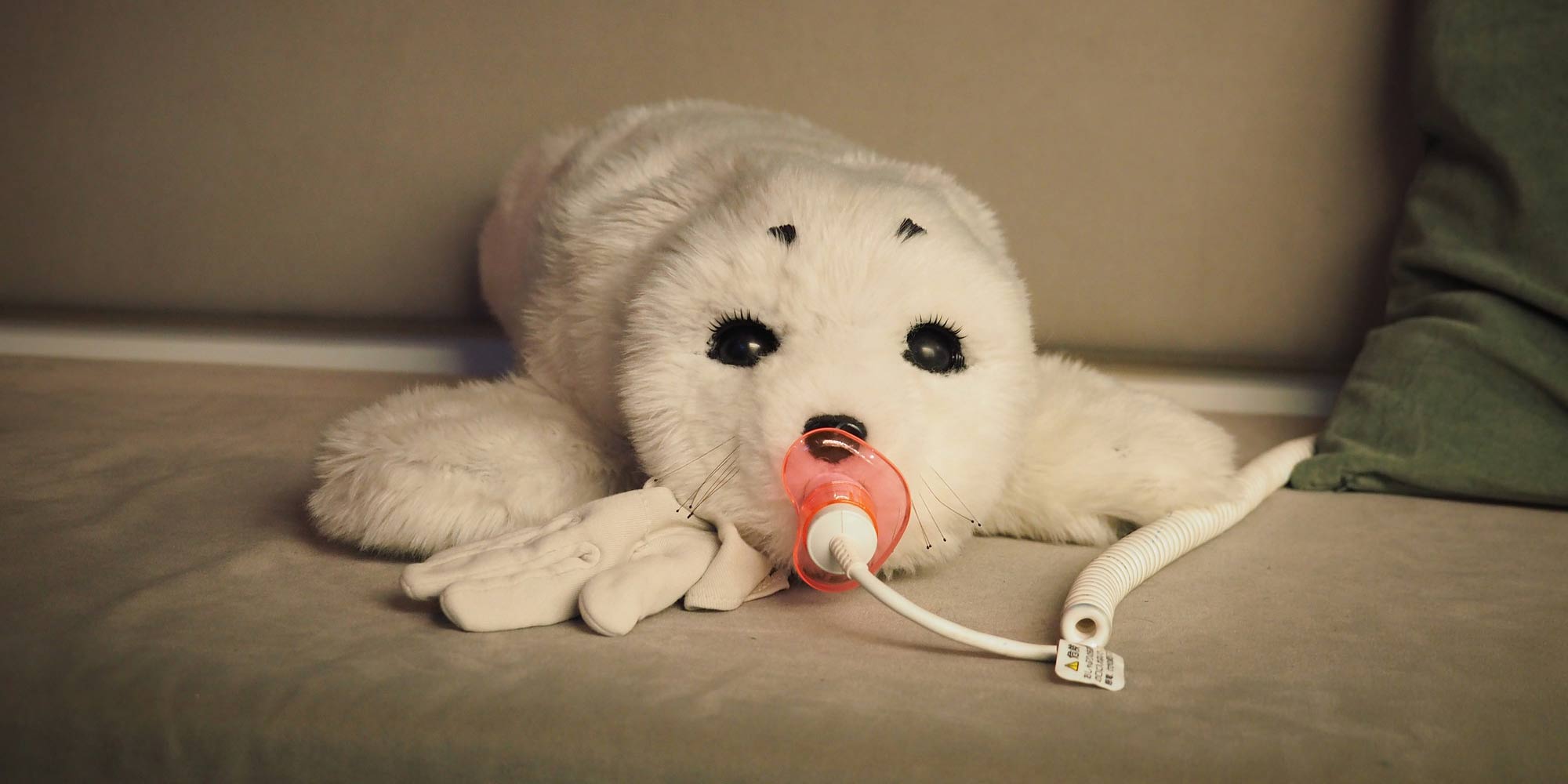
Credit: Ars Electronica / Martin Hieslmair
What’s next in 2019?
Ars Electronica celebrates its 40th anniversary. It will be an even more intense year than 2018. The Open Calls of the Prix Ars Electronica and the STARTS Prize will be joined by another competition in mid-January 2019. In the middle of the year, we will reopen the new permanent exhibition in the heart of the Ars Electronica Center. And the days between September 5- 9, 2019, remain free for the Ars Electronica Festival. We’re still thinking about what the birthday cake will look like.
If you’d like to stay informed about all this and other activities in all our areas, sign up for our Newsletter, visit the Ars Electronica Blog from time to time and follow us on Facebook, Twitter, Instagram, Flickr and YouTube.
Have a good New Year!
